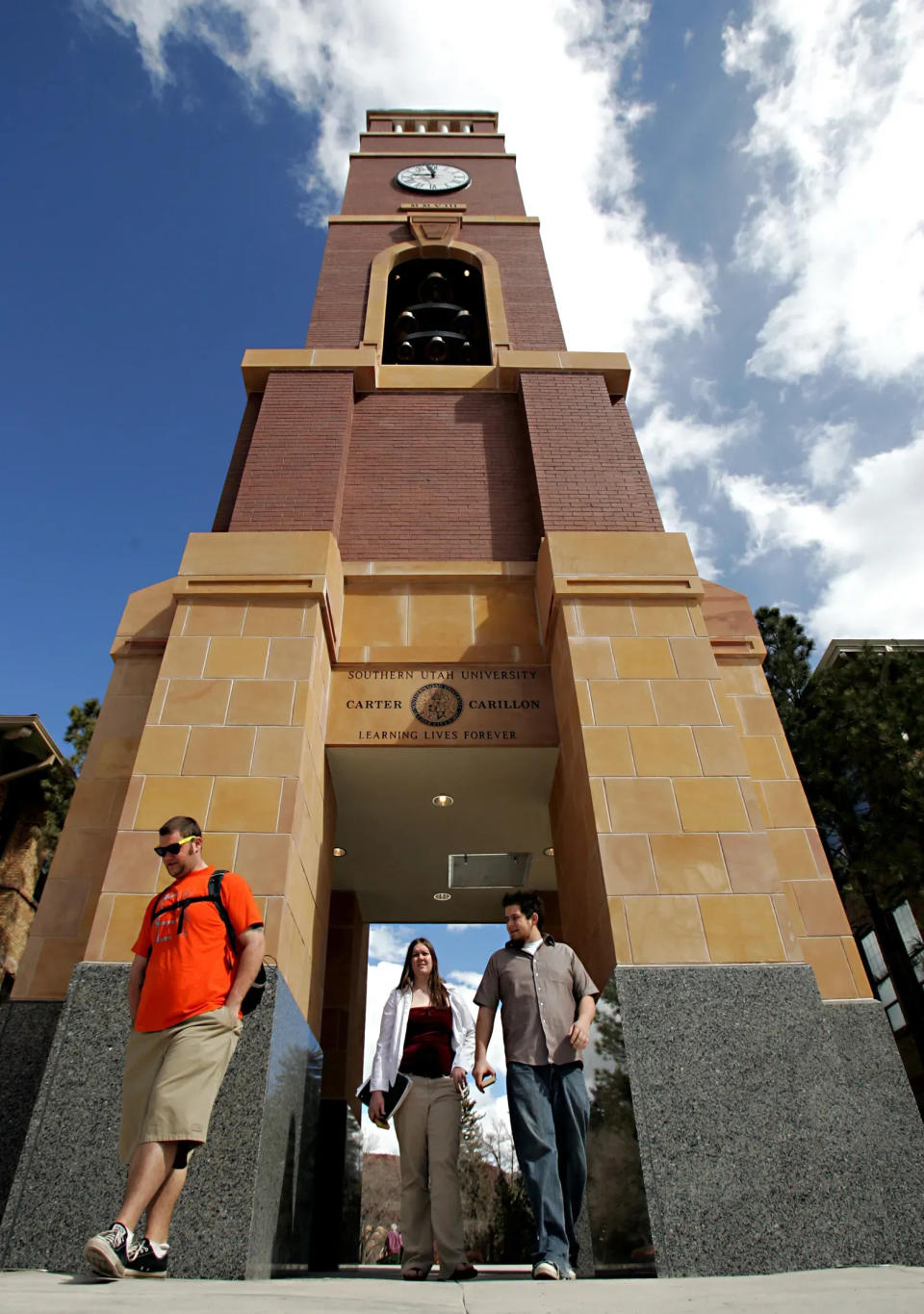Spring forward: Daylight saving time returns to Utah this weekend
It's that time again.
Utah, along with most of the rest of the U.S., is scheduled to "spring forward" into daylight saving time on Sunday. The clocks move forward one hour from 2 a.m. to 3 a.m., local time.
A twice-annual changing of the clocks is habit for most Americans, but it still raises questions among many each time. Exactly when the clocks change and why are common questions across the Internet this week, according to Google, and so too are inquiries about why the U.S. — along with a majority of other countries — bother with it.
What is daylight saving time?
Daylight saving time, or DST, was first used in the U.S. in 1918 as a way to conserve energy during wartime. Now, a full century later, many Americans believe the practice is antiquated, with recent research suggesting it may cause more problems than it solves, with ongoing debates over the apparent health issues associated with clock changes, the potential economic costs, and a general frustration over the different practices used in different states and in different countries.
Yet DST remains the most common practice across the U.S. — except Arizona — and across most of the world, with advocates celebrating its benefits for farmers, ranchers and others who work outside, and for the long summer evenings that many associate with warmer seasons.
Utah has been a telling example, with a series of legislative efforts to exempt the state from DST having seen public debate in recent years, all of which failed.

Why bother with DST?
While changing the clocks is a twice-a-year habit, few Americans know why they are doing it. A report from Rasmussen Reports suggested only a third of Americans thought it was worth the hassle, and many didn't understand why they were supposed to do it.
Pushing the clocks forward in the summer has helped create a tradition of late summer evenings, and the extra hour of daylight can be indispensable for those who enjoy more time outdoors.
But studies in recent years have tied clock changes to health issues, increased car accident rates, workplace injuries and even depression. There is also a body of research suggesting that reduced workplace productivity and maintenance issues resulting from the clock changes take a toll on economic activity.
Some businesses have vouched for DST as being a good thing, especially golf courses, grill and charcoal industries and other companies that profit from people being outdoors during their waking hours.
How did daylight saving time start?
The idea of changing clocks to better match up with the seasons goes back to ancient times, but the modern practice is usually credited as starting in World War I era Germany, where officials wanted an extra hour of daylight to cut down on nighttime fuel usage and allow for another hour of work productivity.
According to TimeandDate.com, which tracks time trends worldwide, most countries dropped the practice after the war, but Great Britain kept the practice up, making it a permanent national policy in 1925.
In the U.S., Daylight Saving Time returned with World War II and then left up to states to decide whether to adopt it or not. The Uniform Time Act, passed in 1966, attempted to simplify DST patterns, requiring states to either change the clocks at a specified time or stick with standard time throughout the year.
Only two states don't observe it – Hawaii and Arizona. Other non-observers include American Samoa, Guam, Puerto Rico and the Virgin Islands.
In 2007, the federal government expanded daylight saving time in order to reduce energy consumption. The law now specifies that daylight time applies from 2 a.m. on the second Sunday of March until 2 a.m. on the first Sunday of November. Daylight saving time now accounts for about 65% of the year.
Could Congress end daylight saving time?
The U.S. Senate voted unanimously last March to pass the Sunshine Protection Act, which would extend DST to last for the entire year. If enacted, it would have meant the clocks would never change, starting after they "spring forward" in March 2023. But the bill never received a vote in the U.S. House, let alone head to President Joe Biden's desk for a signature.
Another version of the bill was reintroduced last week, sponsored by Florida's Republican Sen. Marco Rubio.
“This ritual of changing time twice a year is stupid,” Rubio said in a statement released along with the bill proposal. “Locking the clock has overwhelming bipartisan and popular support. This Congress, I hope that we can finally get this done.”
The new bill is similar to last year's and proposes again that this weekend's clock change is the country's last.

State legislation on daylight saving time
In the meantime, states keep taking their own steps toward dropping the practice.
According to the National Conference of State Legislatures, in the past five years, 19 states have "enacted legislation or passed resolutions to provide for year-round daylight saving time, if Congress were to allow such a change, and in some cases, if surrounding states enact the same legislation. Because federal law does not currently allow full-time DST, Congress would have to act before states could adopt changes."
At the federal level, the U.S. Department of Transportation is actually in charge of daylight saving time and all time zones within the country.
"The oversight of time zones was assigned to DOT because time standards are important for many modes of transportation," according to the department's website.
This article originally appeared on St. George Spectrum & Daily News: Utah daylight saving time 2023: Set clocks to spring forward

